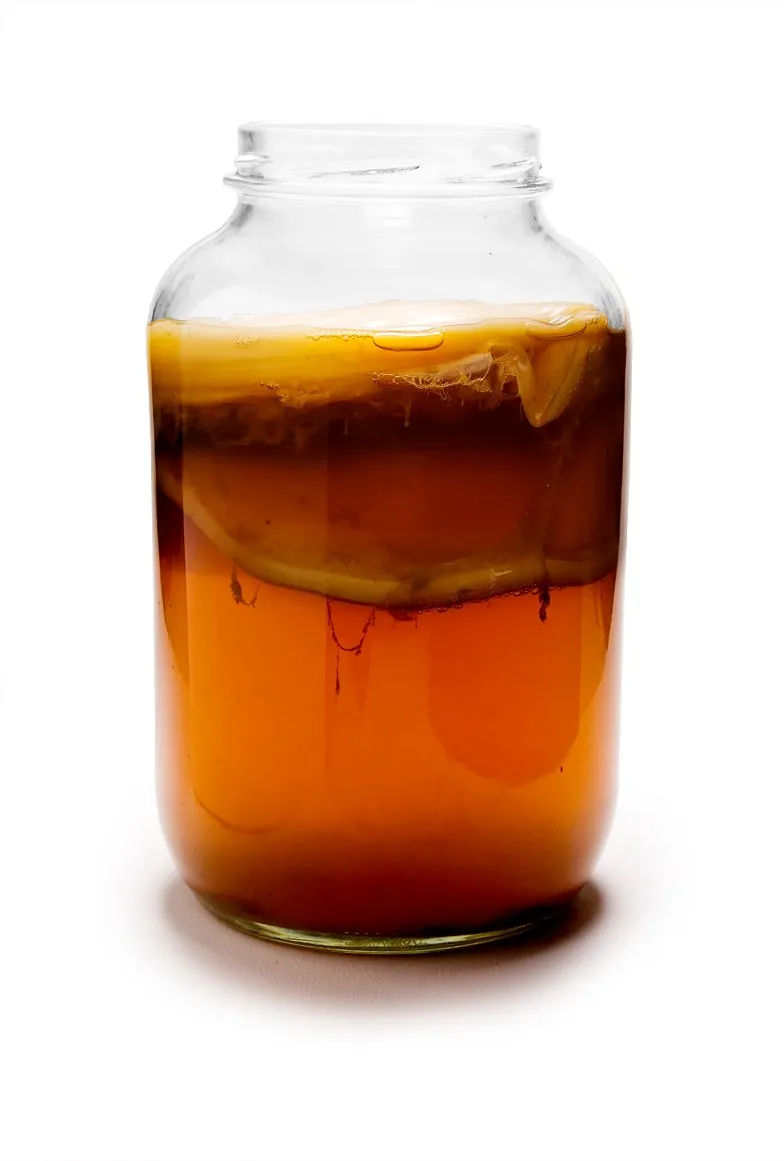Two days ago I spoke with an early adopter of Kinoko Kombucha. Since he is living a bit out of delivery zone, (but I was nearby for this time and could make a delivery) I suggested him he could start making it himself. He responded that was his intentions but he "needed a SCOBY" for that. So I told him we had made our own SCOBY's as well and I'd share the recipe soon. So in this post we cover that exactly, referring to our Hive blockchain logged transactions related to our SCOBY creation too!

About the SCOBY, circling back to Wikipedia for the "dry info":
Kombucha is produced by fermenting sugared tea using a symbiotic culture of bacteria and yeast (SCOBY) commonly called a "mother" or "mushroom". The microbial populations in a SCOBY vary; the yeast component generally includes Saccharomyces cerevisiae, along with other species; the bacterial component almost always includes Gluconacetobacter xylinus to oxidize yeast-produced alcohols to acetic acid (and other acids). Although the SCOBY is commonly called "tea fungus" or "mushroom", it is actually "a symbiotic growth of acetic acid bacteria and osmophilic yeast species in a zoogleal mat [biofilm]". The living bacteria are said to be probiotic, one of the reasons for the popularity of the drink.
So yes, the SCOBY is a pretty essential part and after some failed attempts (because of wrong (pasteurized) starter teas) we finally managed to make ours over the timespam of about 14 days-17 days (exact times can be found in our sensorlogs on the block-explorer).
Living up to our "opensource" mantra, here is how we did ours:
First off, most importance: work surgically clean. This is of utmost importance. You should clean yourself, wash your hands, and rinse of any leftover soap residues. Dress clean, tuck away your hair. Your utensils should also be cleaned to the bone and rinsed vividly. It is essential there is no soap residues left anywhere, especially "anti bacterial" soaps, which are now all to common and used often because of Covid-19. Totally smart to do, yet very dangerous for the Kombucha SCOBY.
Next, get your utensils ready:
- A wide glass jar with open top.
- Tea, loose leaf, black tea. (we use ceylon). You can also try mix with green tea, but best of to start experimenting only later once you have a working SCOBY
- Sugar, raw
- Water, (filtered if your local tap water is chlorinated or fluorinated!)
- Cheese cloth or napkin cloth or coffee filter
- Rubber bands
Now. Be aware you need time. 2-3 weeks in this case, depending on your room temperature. You need patience. You need to withstand the urge to touch the glass jar during the process.
Ok here is the recipe we used for our succesful SCOBY. Simple multiplicate or adjust per your Jar's sizing.
Related blockchain TX's
- b37b5a780f5b259fd5786f75c318b659a1de31b6 @ 43186171 (2020-05-07 06:32:51 (UTC))
- f6f09180521a6829ec192ddd97aacc5ba54f9d58 @ 43186188 (2020-05-07 06:33:42 (UTC))
We used the following amounts to create 4 SCOBY's (as we have 4 Jars at the moment), so you can easily (minimally) divide yours by 4. It basically boils down to the ratios for the SCOBY creation and it is sufficient to use only 1/3rd of the volume of your jar for the creation of the SCOBY.
{
"s":"scoby",
"relblocknum":43186171,
"d":[
{
"ingredients":{
"water":7000, // (ml)
"sugar":450, // (grammes)
"starter":1000, // (ml)
"tea":[
{
"ceylon":48 // (grammes)
}
]
},
"notes":"trying to form a new scoby using raw kombucha starter from the store"
}
]
}
Steps:
- Boil the water
- Steep the tea for 10 minutes or so
- Filter out the tea leaves
- Add the sugar, dissolve, stir well
- Cool down the tea. Important (!) To room temperature 30°C
- Add the Starter Tea only once the other tea has cooled down, or you risk killing the live culture.
- Cover the jar with the napkin / cheese cloth or coffee filter. Use the rubber band to tighten. Tip: Cover it twice for extra protection.
- Put away your glass jar in a place out of direct sunlight and shake-proof. Let the fermentation begin in all calmness. Don't touch the glass jar to shake things up, because it will delay the process.
- Wait. Wait longer. Depending on the Starter Tea's freshness and rawness as well as the room temperature you will need to wait variable times. We saw it grow within 2 weeks and decided to start using the SCOBYs for Kombucha production once they had grown to about almost 1 Centimeter thickness.

About Starter Tea
We had some problems with our initial SCOBY creation, so we already did the fails, from which you can learn :) We found out that we had used pasteurised "fake"-bucha which obviously doesn't have any alive starter culture any more. So then we found our Genesis: Cultcha Kombucha! One of those 250 ML packs was especially cloudy, indicating loads of culture and we stirred up four to evenly distribute in our case over 4 jars.
You can perfectly use Kinoko Kombucha as a starter for your own batch. Kinoko Kombucha is raw and not pasteurised. I want to reiterate that you need to be sure that you work surgically clean at all times and therefore only use fresh out of the bottle Kombucha, which have not yet seen your lips :)
Good luck and post any questions you might have! We don't say we have all the wisdom, yet together we can learn and grow (some SCOBY's)! In a future post we will cover how to use your SCOBY in the actual creation of fermenting Kombucha.
